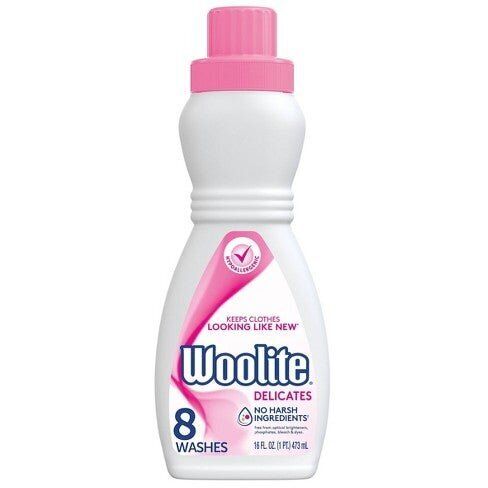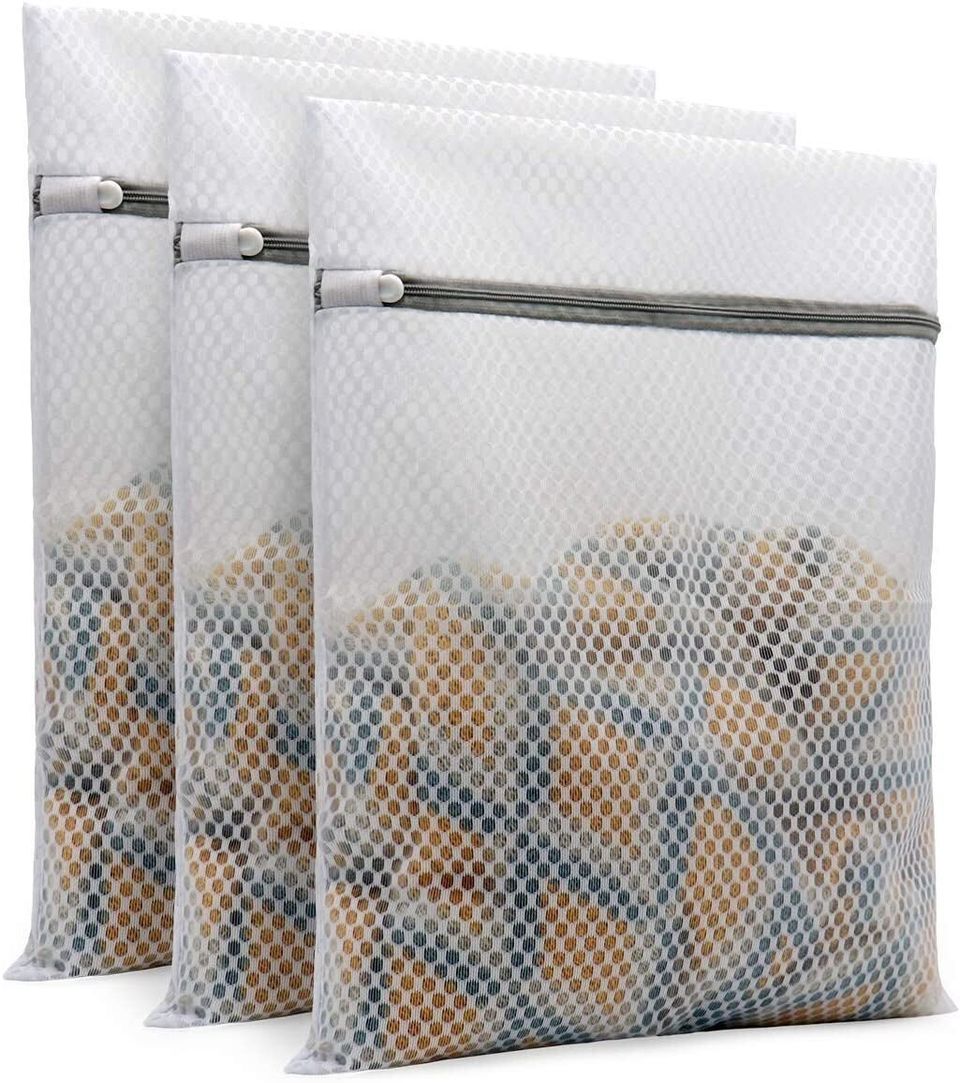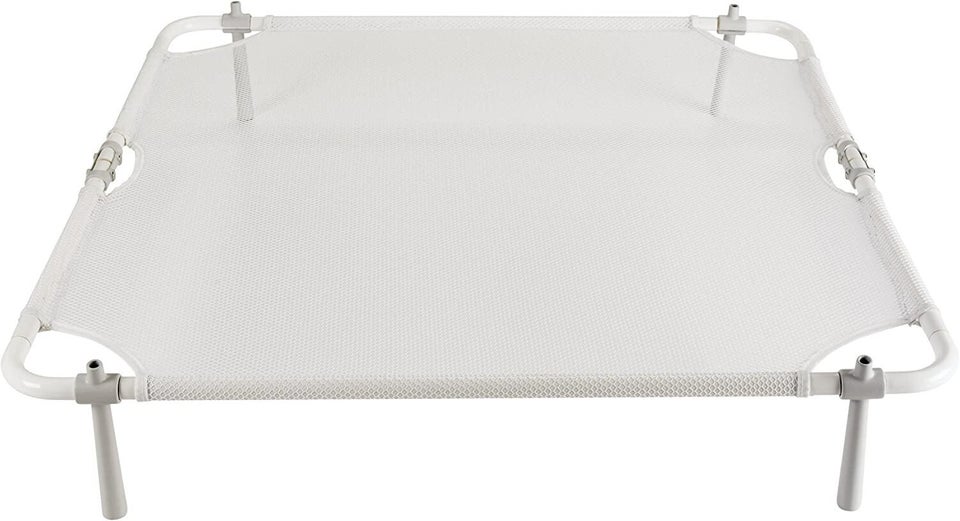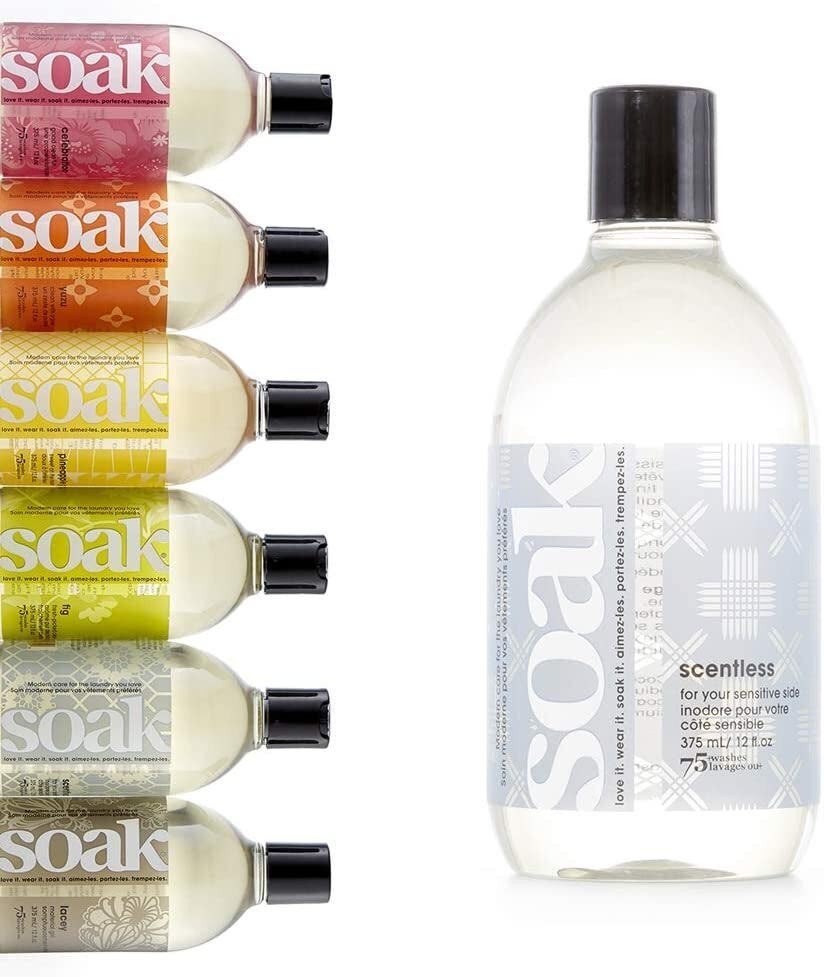
We love wearing knit sweaters in the cooler months. But washing them? Not so much. Whether your sweater is made of wool, cashmere or even cotton, cleaning it can feel like a game of roulette. Will it shrink to an unwearable size? Will it get fluff all over everything else in the wash? Will it get weirdly stretched out?
For all of these reasons and more, washing a brand-new sweater can feel super stressful. But it doesn’t have to be! To help us with our sweater-washing anxiety, HuffPost consulted professional dry cleaners and laundry experts to get their best tips and product recommendations.
Read the label
When it comes to washing knit sweaters, throwing them in the washing machine with all your other clothes and hoping for the best isn’t the smartest idea.
“Knit sweaters are delicate due to the way the stitches come together as a series of loops,” said Alexandra Wojenski, a sustainable cleaning expert and Grove guide at Grove Collaborative. “Compared to a woven fabric, the knitted loops are often looser and can be easily stretched.” She added that a washing machine can pull the fibers of knit sweaters, leaving them misshapen, stretched out and more quickly worn out. “For wool or wool-blend knits especially, heat from a washer can be dangerous and cause irreversible shrinkage.”
To help prevent laundry mishaps, the first step to cleaning a knit sweater should be consulting the care tag — that little piece of fabric with symbols you’ve probably never bothered to look up.
“Read the garment care label,” said Zachary Pozniak, vice president of Jeeves New York, who also spoke on behalf of Jerry Pozniak, the dry-cleaning company’s CEO. In addition to telling you the best way to wash it, the label will also give the material of your sweater. “Wool, viscose, rayon and angora knits all need to be dry-cleaned due to shrinkage issues.” They added that some merino wool and most cashmere sweaters can be hand-washed and air-dried, and most cotton knits can be machine- or hand-washed and machine-dried. “Knits can be tricky, and if the sweater is expensive I would not risk hand-washing and ruining the garment,” Pozniak said. When in doubt, bring it to the dry cleaners.
As far as sweater materials go, Wojenski notes that compared to cotton or synthetic materials, wool and cashmere are more sensitive to heat and movement because of their short fibers. “A tightly knit 100% cotton sweater will be more durable, and depending on the frequency of wear, is one that I may toss in the wash on a delicate cycle from time to time in a delicates bag to protect it from pilling and snags,” she said.
If a sweater tag says “dry clean only,” it’s probably best to heed that advice. “You risk color fade, shrinkage, damage, stretching and many more issues if you don’t consider what appears on your sweater tags,” said Sanda Chun, owner and co-founder of Sanda’s Cleaners.
Hand-washing 101
Hand-washing is a more gentle way of cleaning your sweaters than the washing machine, but there are a few things to keep in mind for best results.
First off, don’t use regular detergent. “Detergent isn’t good for natural fibers. You should use soap or a special wool wash,” said Patric Richardson, also known as The Laundry Evangelist. Pozniak recommends using a detergent that is specifically formulated for knits, like Soak or Eucalan Fine Fabric wash.
“Follow the instructions on the bottle for the amount of detergent to use,” Pozniak said. “Please measure your water and detergent ― do not guess.”
Wojenski laid out the general hand-washing process: “Fill a clean vessel (like a sink or bathtub) with lukewarm water and a small amount of a gentle laundry soap,” she said. “Mix the soap into the water and then lay in the sweaters, patting them in so they are submerged.” Once submerged, she recommends letting the sweaters sit in the water for up to 15 minutes, agitating the water every few minutes with your hands, then draining the water and rinsing the sweaters.
When squeezing the water out of your freshly washed sweaters, be gentle. That means no wringing or twisting, which can stretch sweaters and change their shape. To dry, Chun recommends placing each sweater on top of a dry towel, then rolling it up like a sleeping bag. “Give the roll some soft squeezes and taps, and allow the water from your sweater to absorb into the dry towel surrounding it.” Unroll your sweater, then place it on top of another dry towel to air dry fully. Laying sweaters flat to dry will prevent them from stretching or becoming misshapen.
Extend your time between washes
No matter how gentle you are, washing a sweater will inevitably cause some wear to the material. So if you’re hoping to extend the life span of your favorite knit, only wash it when necessary. If your sweater needs a refresh between washes, Richardson recommends spraying it with vodka. Yes, vodka. “It kills all odors and dries immediately,” he said.
One way to keep sweaters cleaner for longer is wearing an undershirt or T-shirt underneath. Sweater materials can also come into play. “Wool is moisture-wicking, so it can withstand a longer time between washes than cotton,” Wojenski said. For washing sweaters, her rule of thumb is to wash them when they begin to look or smell dirty, and before putting them away for the season so that stains and smells don’t set in.
“Off-season handling and storage of sweaters is critical,” Chun said. She recommends folding clean sweaters with tissue paper and storing them in breathable storage areas (like closets, drawers or dressers) with lavender pouches to ward off moths and prevent unfavorable smells or odors.
Shopping for some sweater-washing essentials? These picks are expert-approved.
HuffPost may receive a share from purchases made via links on this page. Every item is independently selected by the HuffPost Shopping team. Prices and availability are subject to change.





